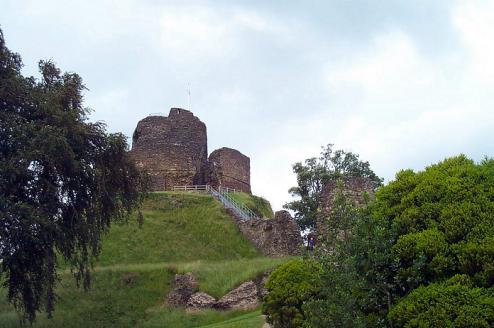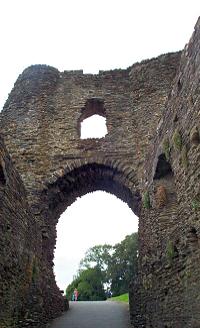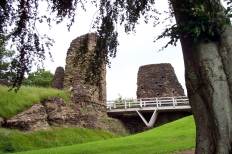| The first castle on this site, situated on top of a large,
natural mound, was constructed soon after the Norman Conquest. It was
the typical early Norman castle, constructed of earthworks with defensive
ditches and, most probably, timber palisades. It was first known as Dunheved
and, as it controlled the main route into Cornwall, became the administrative
headquarters for the great Earls of Cornwall. During the 13th century,
the earldom was held by Richard, a younger brother of Henry III, one of
the wealthiest and most powerful men in England at the time. He had the
castle re-built in stone with a curtain wall skirting the original mound,
new gatehouses incorporating solid drum towers, a new circular high tower
within the keep and a Great Hall within the twelfth century Bailey. |


